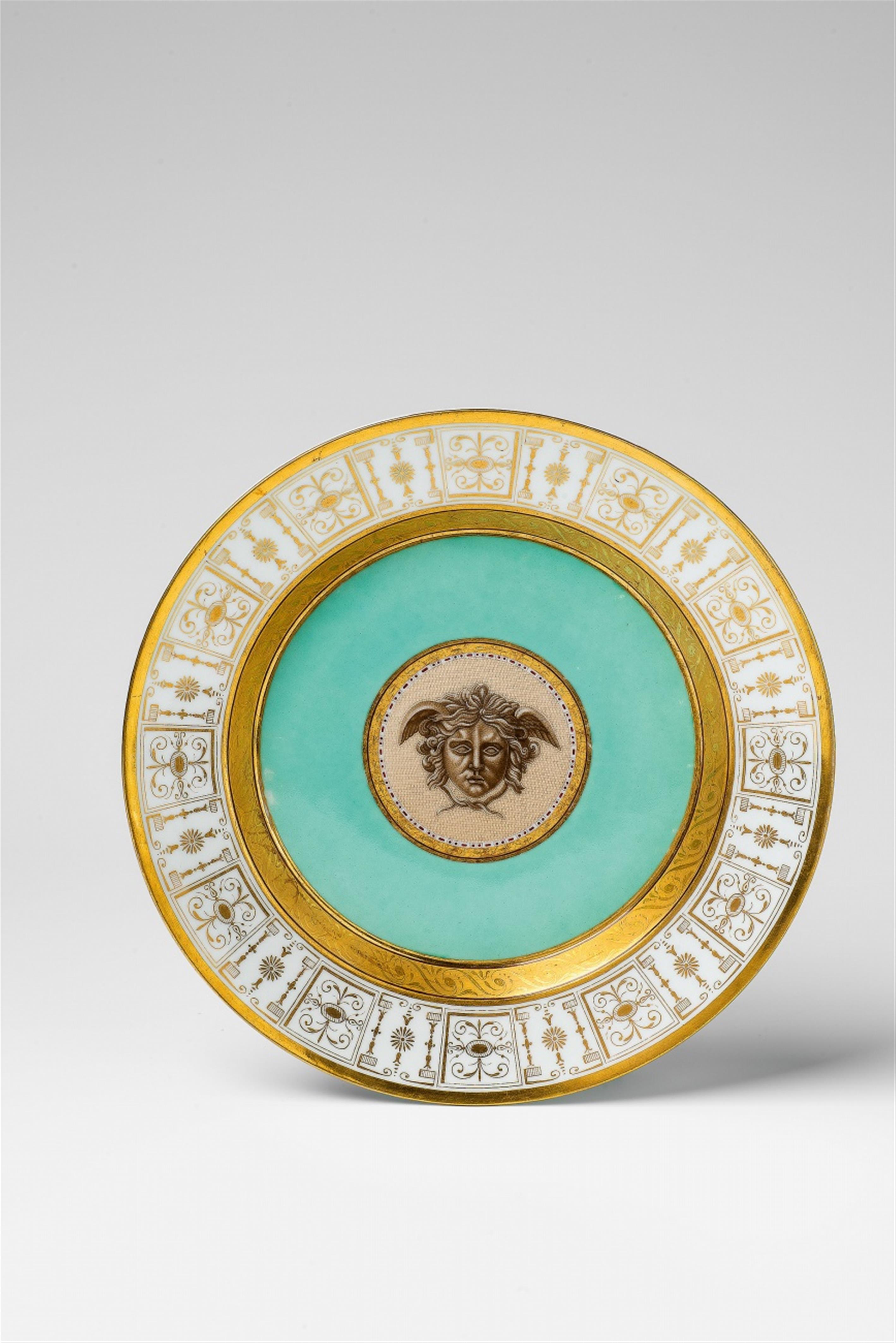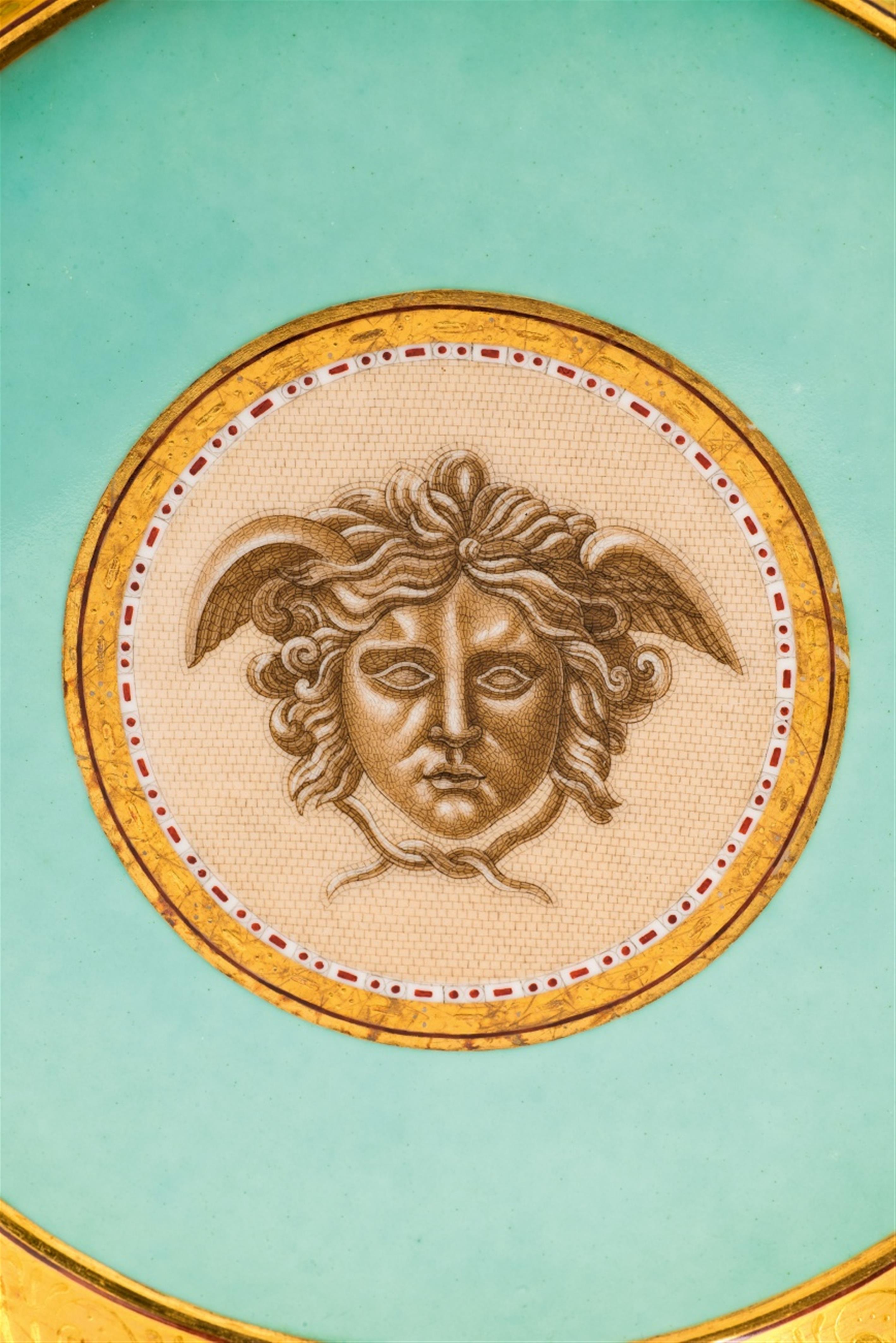A Berlin KPM porcelain plate with the head of Medusa
Model no. 1103. Decorated to the well with a depiction of the head of Medusa painted in micromosaic technique reserved on seladon green ground. The border with gilt Greek key design and 24 trapezoid segments with sceptre and arabesque motifs. Blue sceptre mark with pale blue dash, brown rhombus, impressed and incised III. D 24.1 cm.
1803 - 13.
The head of the Gorgon Medusa, slain by Perseus, became famous as the motif that decorated Athena's shield. The head, symbolising the horror of death, was often featured in depictions of the Greek goddess of protection. However, many versions of the motif can be found on vases, coins, door panels, mosaics, and the murals of Pompeii. In the 19th century, the German archaeologist Adolph Furtwängler was able to define three types of depiction: The archaic type, the middle type, and the beautiful type. The prototype for this micromosaic design is the beautiful type, in which the Gorgon's perfect features stun the viewer with rapture rather than turning him to stone. This type can presumably be traced back to the Greek sculptor Phidias (5th C. B.C.). The Wallraf Medusa in the Römisch-Germanisches Museum in Cologne and the Rondanini Medusa in the glyptothek in Munich both follow this type. At the time this plate was produced, both Gorgons were still housed in Rome. Canon Franz-Ferdinand Wallraf from Cologne acquired his Medusa in around 1818/20 from the Roman art dealer Gaetano Giorgini, and the example in Munich was purchased in Italy in 1814 by Ludwig I. Canova's spectacular sculpture of the triumphant Perseus made in 1800/1801 (now housed in the Vatican Museums) must have also increased the popularity of this motif in the early 19th century. In reacting to the popularity of this subject at the time, the painter of this KPM plate has created an incunabulum of design, whose deathly stare and hair of snakes still fascinates and inspires the fashion of the late 20th century.
Provenance
Bolland & Marotz Bremen, 15th December 2007, lot 106.
Literature
For more on the iconography, cf.: Karoglou, Dangerous Beauty. Medusa in Classical Art, The Metropolitan Museum of Art Bulletin, Winter 2018.




